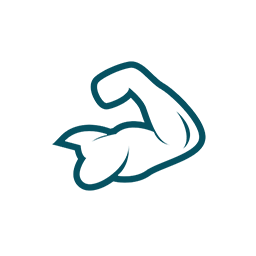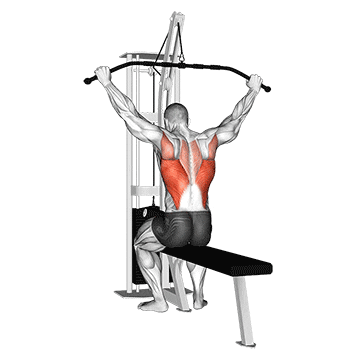The Cable Wide Grip Rear Pulldown Behind Neck exercise is a variation of the traditional cable pulldown exercise that targets the muscles in the upper back, particularly the latissimus dorsi. This exercise helps improve overall back strength and muscle definition.
How to perform
To perform the Cable Wide Grip Rear Pulldown Behind Neck, follow these step-by-step instructions:1. Adjust the height of the cable pulley machine so that it is above your head. Attach a wide grip handle to the cable.
2. Sit on the pulldown machine facing the cable pulley with your knees securely placed under the kneepad. Make sure your feet are flat on the ground.
3. Grasp the handle with both hands using an overhand grip (palms facing away from you) and your hands shoulder-width apart.
4. Keep your chest up, shoulders down, and engage your core muscles. Your back should be straight throughout the exercise.
5. Pull the handle down towards the back of your neck while keeping your elbows pointing down and out to the sides. Your hands should travel in a smooth arc motion towards the back of your neck.
6. Squeeze your shoulder blades together at the bottom of the movement to fully engage your upper back muscles.
7. Slowly release the handle back to the starting position, keeping control of the weight and maintaining tension in your back muscles.
8. Repeat for the desired number of repetitions.
It is important to perform this exercise with proper form to avoid injury and maximize the effectiveness of the movement. If you experience any discomfort or pain while performing the Cable Wide Grip Rear Pulldown Behind Neck, stop the exercise and consult with a fitness professional.
Equipment required
Cable
Cable equipment consists of adjustable pulleys attached to weight stacks that allow for resistance training. This equipment is commonly used for strength training exercises that target various muscle groups in the body, such as chest, back, arms, and legs. Cable equipment provides a versatile and functional way to perform exercises that mimic real-life movements, improving muscle endurance, stability, and coordination.


